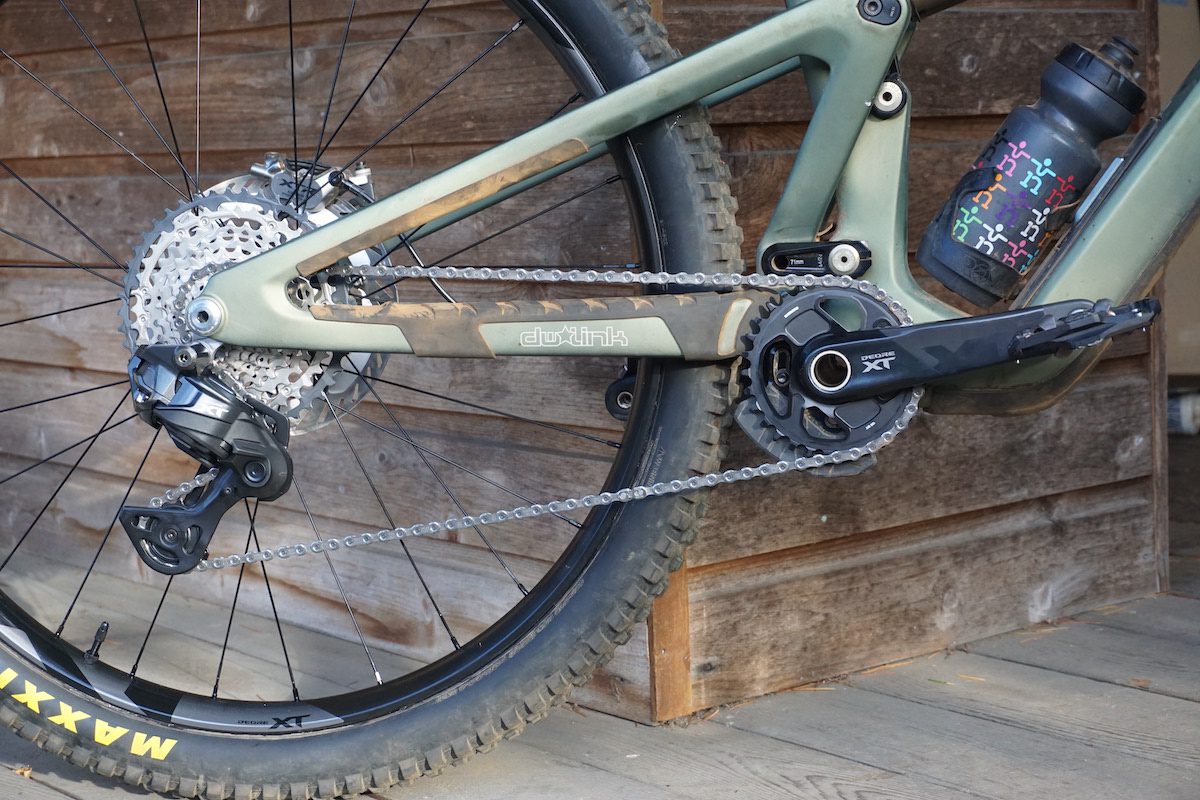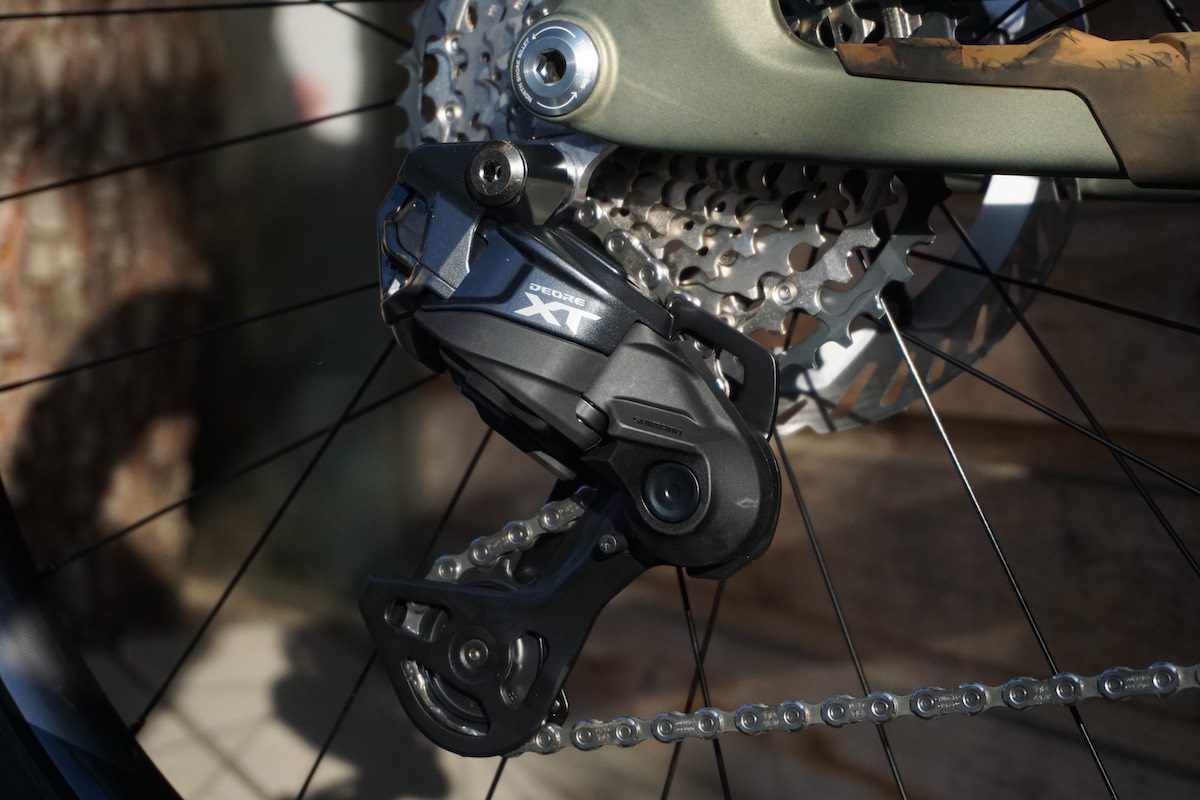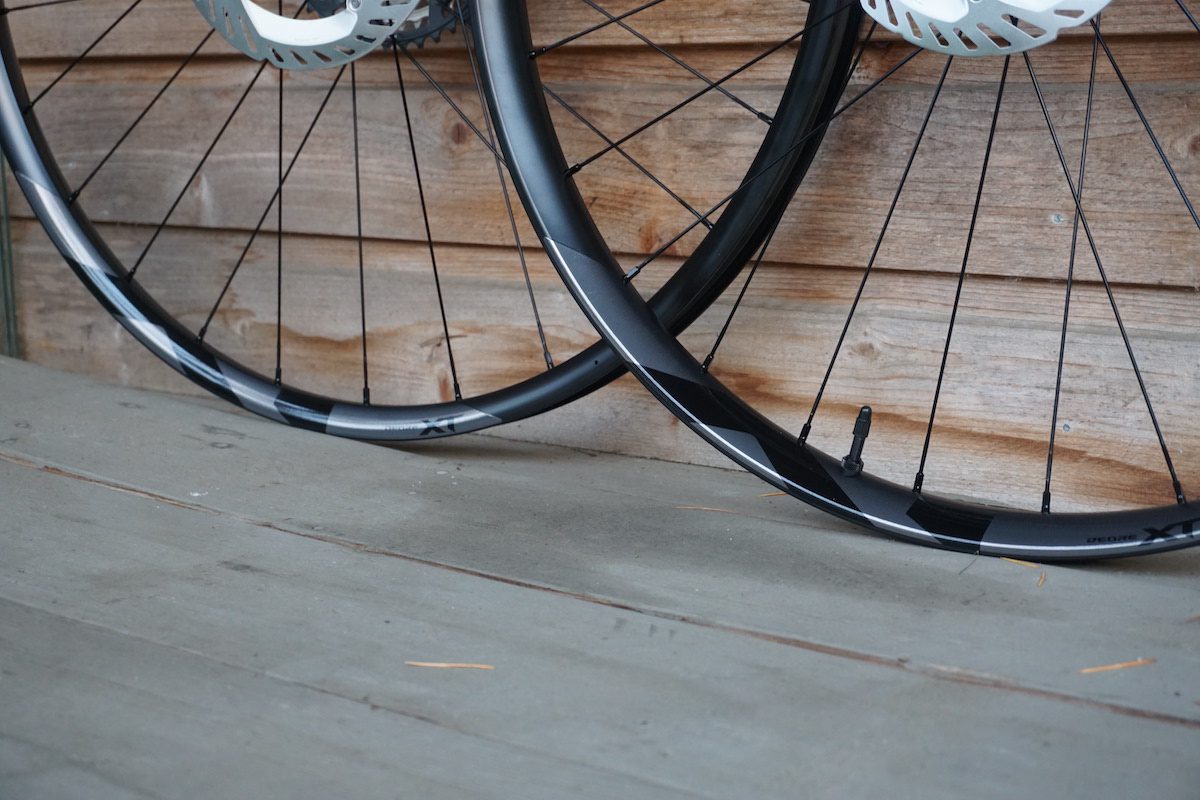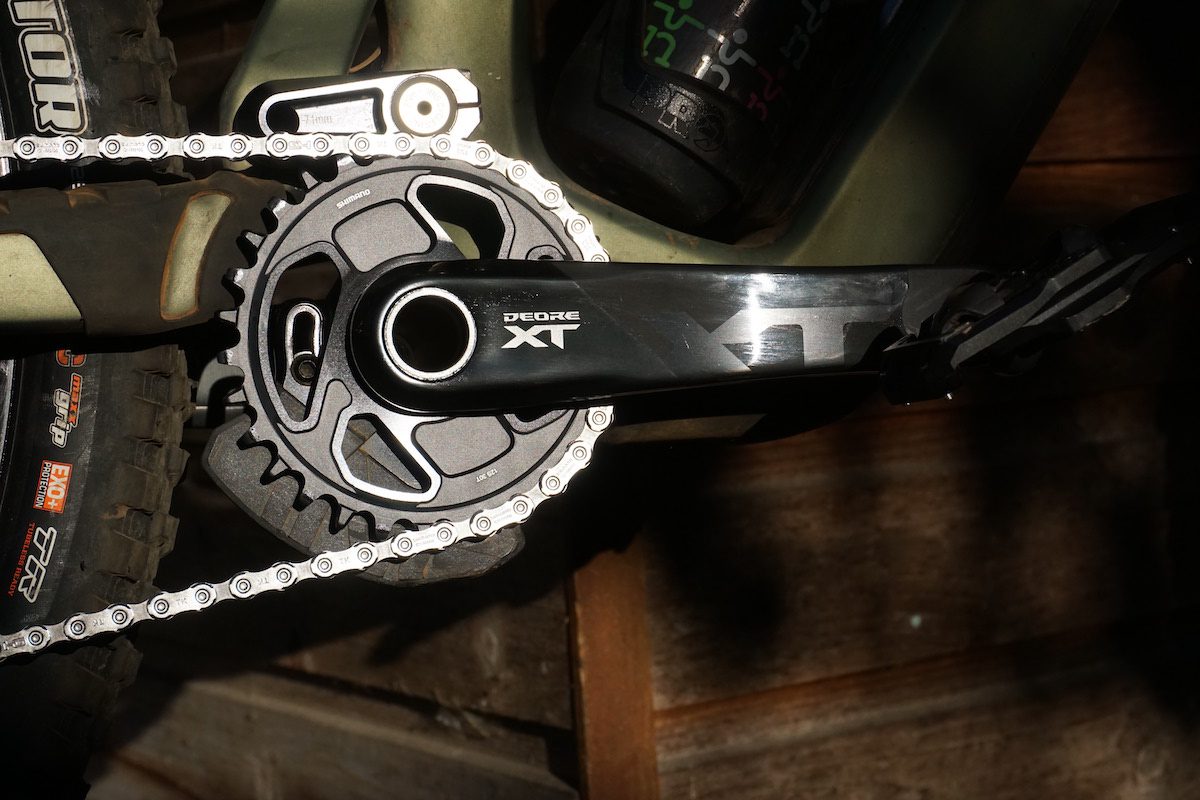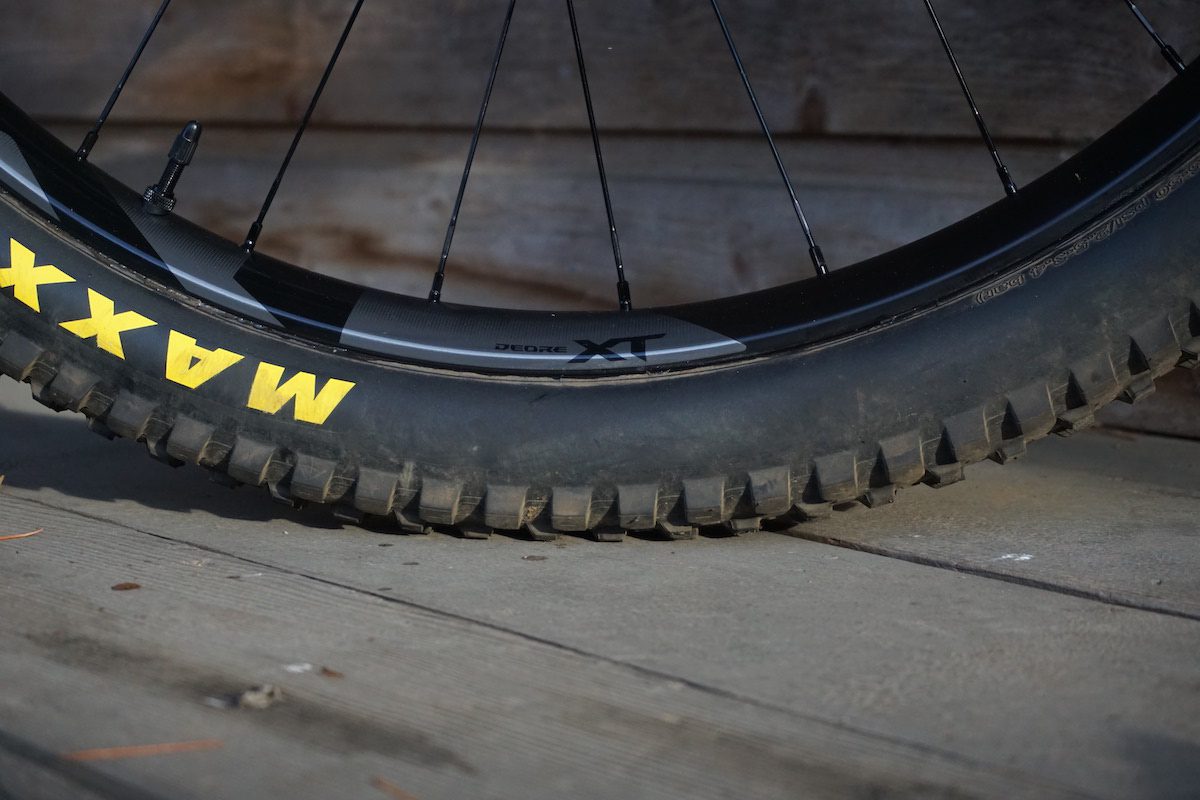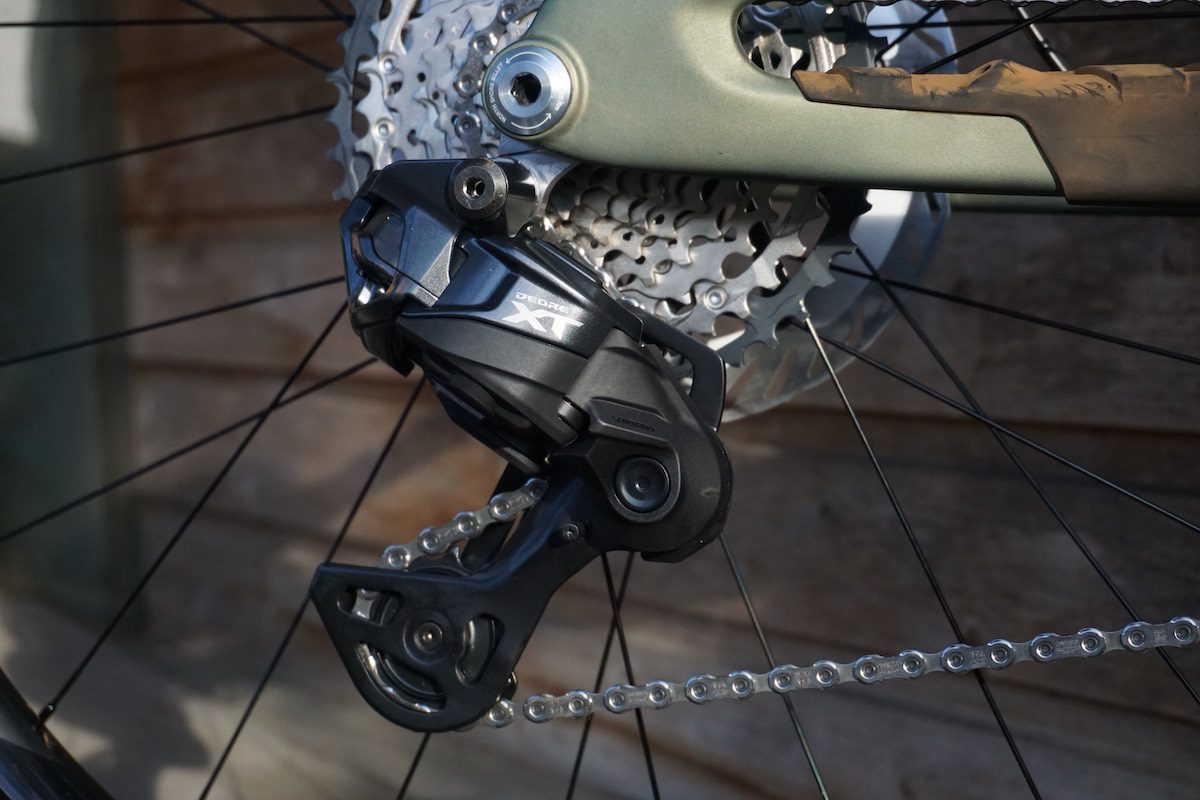When Shimano made its return to electronic shifting, it didn’t just dip a toe. It jumped in with three complete new mountain bike groups (and another gravel option, to boot). We had the chance to spend months riding the ultra-high end XTR M9200 Di2 group and, as you’d expect from the XTR name, it sets a new standard in electronic shifting for mountain bikes. But XTR is rarefied air. Most of us are far more likely to end up riding XT or Deore groups. So we were keen to get time on the new Deore XT Di2 when the opportunity presented itself.
XT is, like XTR, more than just a derailleur. The release includes a welcome return to sub-$1,000 alloy wheels for Shimano and brakes. There’s also a new 9-45 cassette as an option to the standard 10-51, which we have a lot to say about. Here’s our first impressions of Deore XT Di2 M8200.
Shimano XT Di2 M8200: The basics
We covered the new Deore XT Di2 group in detail when it was released, but here’s a quick refresher. Like XTR, the Deore XT drivetrain is now fully wireless. That includes electronic wireless rear derailleur, shifter and an updated cassette.
Shimano is sticking with a standard derailleur mount (it is UDH compatible, to be clear) but introduces a new “automatic impact recovery” function to help XT stand out from the competition. This lets the derailleur internals disengage when it hits anything – a rock, a root, the ground in a crash – and then automatically return to the same position on the cassette. No crash mode. No stopping to reset your derailleur position. Just keep pedalling.
Despite all the new features, XT Di2 M8200 is backward- and cross-compatible with any Shimano 12-speed HG+ group. Shimano’s offering “upgrade kits” that include just the derailleur and shifter, which you can drop into your existing XT (or XTR or Deore or LX) mechanical group to ditch the cables.
There are updated cassettes, including the completely new 9-45 option, as well as new cranks and chainrings. These follow the lead and design of XTR but a little less complex and a little heavier.
Beyond the derailleur
This XT release also includes a major overhaul of Shimano’s brakes, following the lead of XTR. There’s also a $750 alloy trail wheelset, which diverges quite a bit from the bougie big brothers lead, in a good way.
Shimano offers the XT brakes in the new trail lever only, but with thee calliper options (2-piston, 4-piston, 2-piston flat mount) to tune the system for cross country, trail or enduro riding. Like XTR, the Shimano moves XT to the new low-viscosity brake fluid. The lever pivot point moves closer to the bar for better ergonomics, but XT doesn’t get the 5-degree upsweep that XTR does.
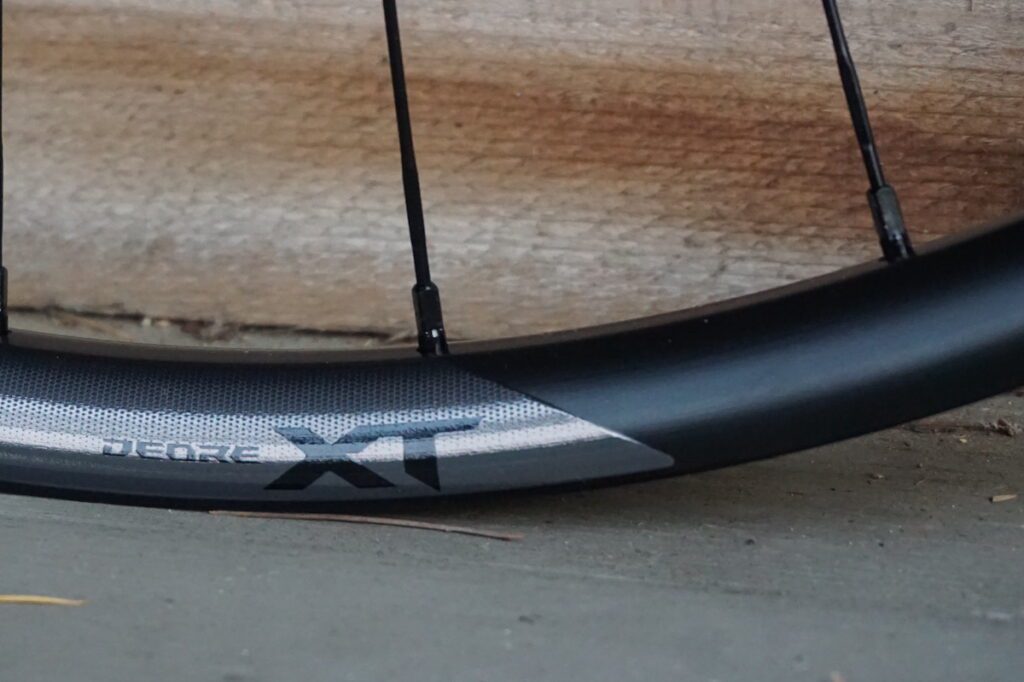 Shimano XT rims
Shimano XT rims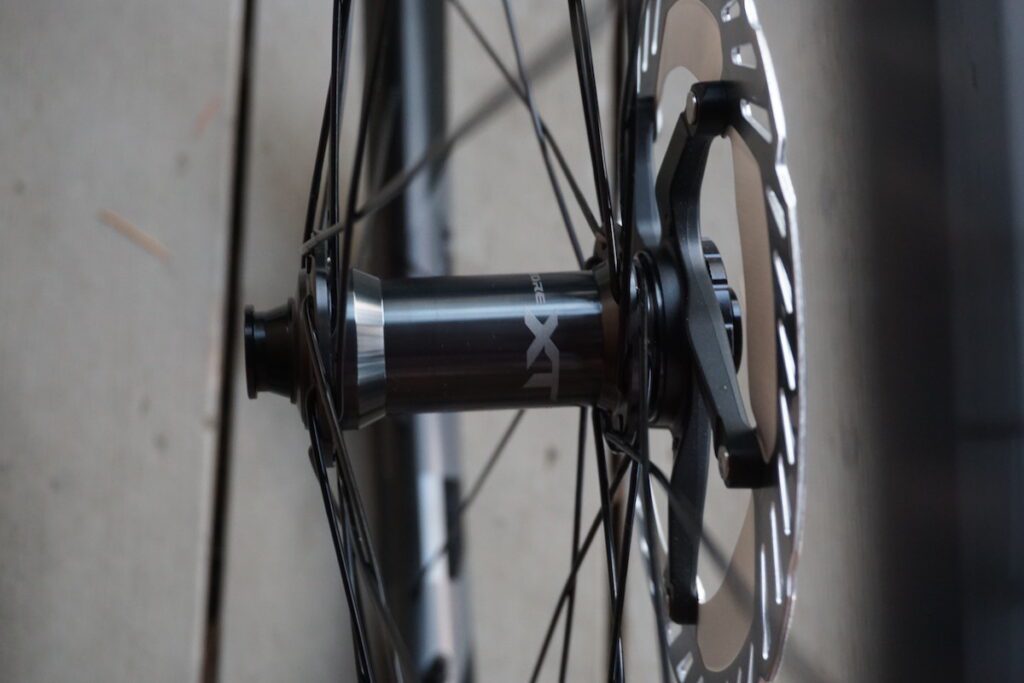 Alloy hubs and centerlock rotors
Alloy hubs and centerlock rotors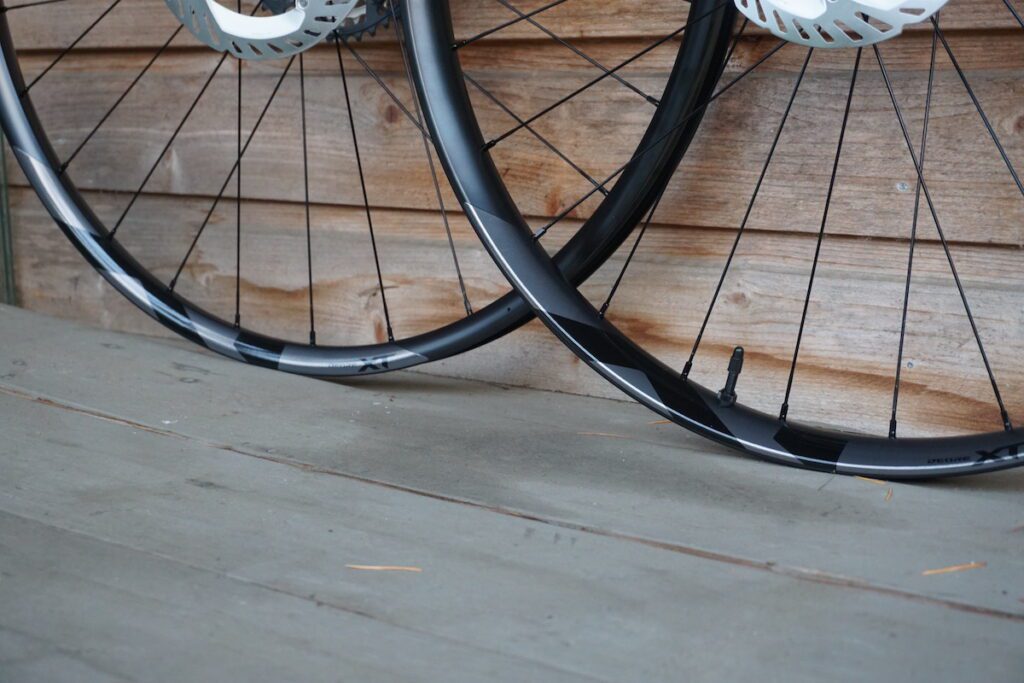 Low profile rim shapes add to the smooth ride quality
Low profile rim shapes add to the smooth ride quality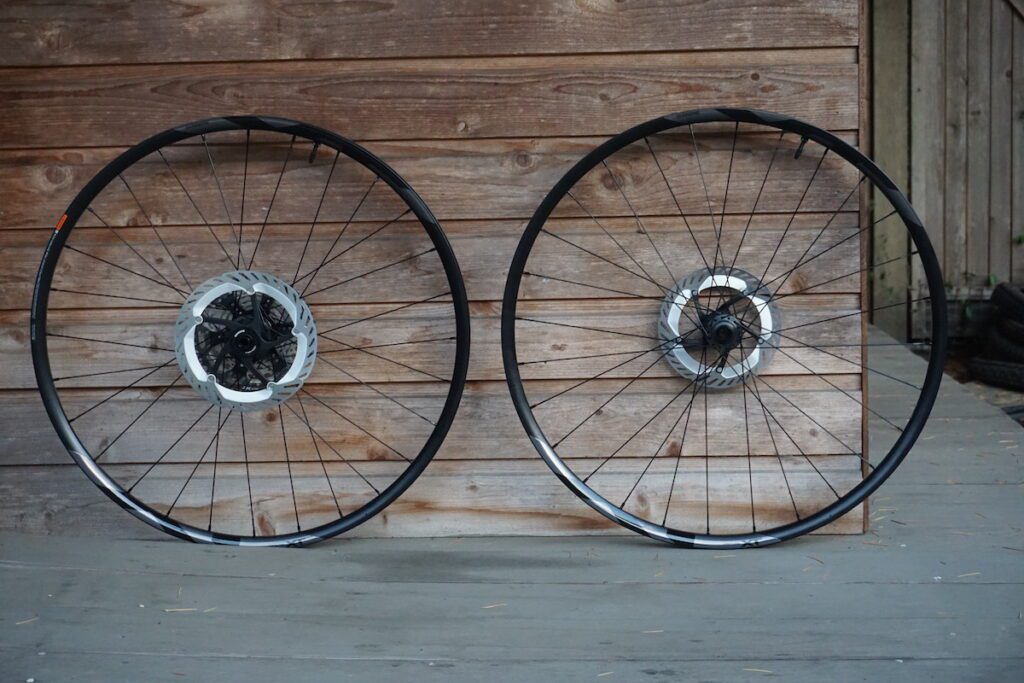 Shimano XT M9210 wheels
Shimano XT M9210 wheels
The new alloy XT wheelset are an exciting return to value-conscious wheels from Shimano. Many of us remember the old XT wheels as a great option at a very reasonable price. The new XT wheels are a little more trail focused, being wider (30mm internal) and a little heavier (1,983g for the 29″ version) and available in 27.5″ or 29″ diameters. XT uses simple, easy to maintain and repair construction. That includes 28 steel, j-bend spokes, and hooked, alloy rims. Shimano also finally moves to cartridge bearings in the hubs, too. There are three cartridge bearings on the new hub (FH-M9210B is the official name), low friction seals and a 3.5-degree engagement on the freehub.
While the rest of XT Di2 is priced in line with similar electronic shifting options (i.e. expensive), the alloy wheels are just $749.99 for a set. The only limitations are centerlock rotors only and Microspline cassettes only (so, no SRAM XD driver to be found).
Installing XT Di2 M8200
Installing Shimano’s new wireless groupset was honestly surprisingly easy. Our XTR group arrived installed already on a bike, so we didn’t have to do that ourselves and I was expecting a little more fuss. While I’ve installed several cable-actuated drivetrains, I wouldn’t exactly call myself an expert mechanic. Setting up XT Di2 was far easier than any mechanical group I’ve done.
Pairing the derailleur with the shifter was easy. Setting the rear derailleur consisted of setting B-tension, high- and low-limit screws and… that’s it. Shimano enables micro-tuning of each gear, but I didn’t have to dig into that, and haven’t had to since. I did smash XTR into a rock during that test, and was able to correct a slower shift with microshift, but XT’s surviving just fine so far. Setting up the brakes was as straight forward as any other set of brakes.
The XT wheels are similarly straight forward. A deep middle section to the rim bed makes it easy to get tires onto the rim. Shimano sends out the rims taped and ready for tubeless set-up. The tape is is nice and clean, making seating the tires easy. I was able to get tires to seat with just a standard floor pump, no compressor needed.
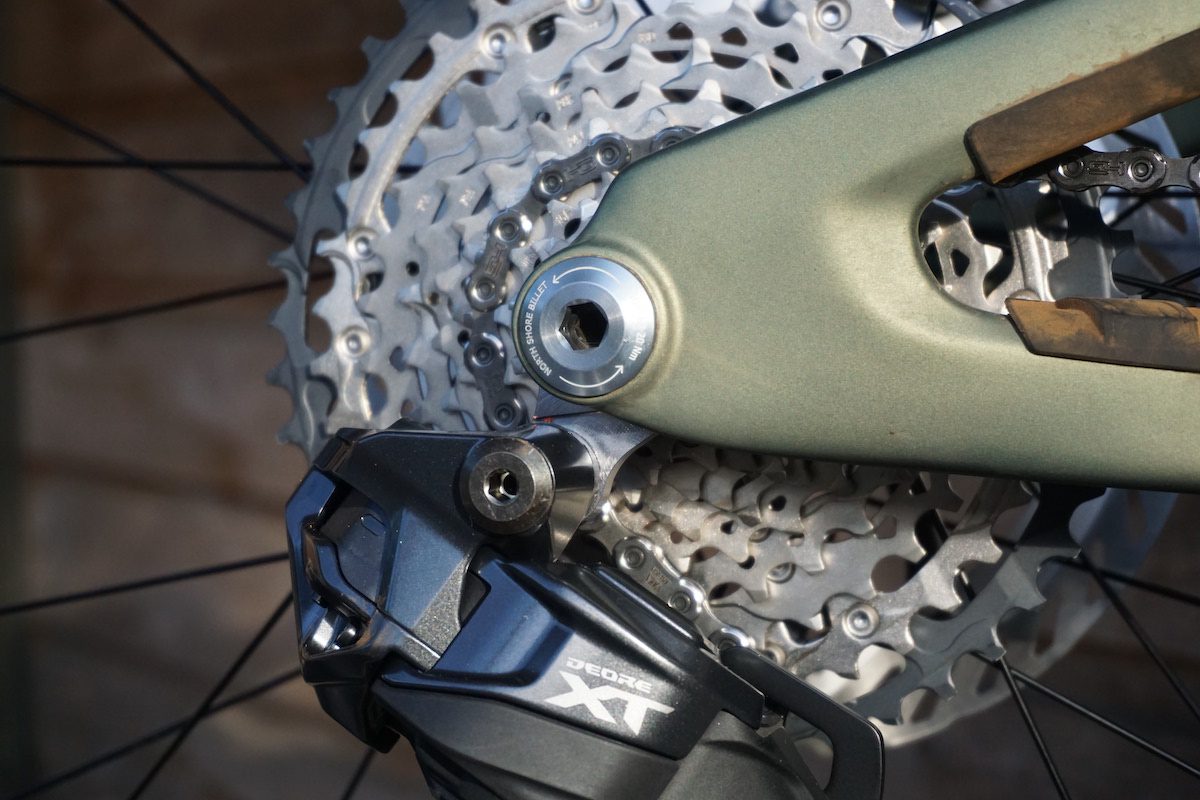 North Shore Billet offers made-in-Canada UDH hangars that look much nicer than the standard options
North Shore Billet offers made-in-Canada UDH hangars that look much nicer than the standard options
A quick note on compatibility
Shimano does not use a direct mount design, as SRAM does, for its rear derailleur. XT Di2 will still work with any UDH frame, and can replace any T-Type direct mount derailleur with XT Di2. All you need is a UDH derailleur hangar (available widely, including in bespoke options like the North Shore Billet hangar we used for our testing). Shimano XT Di2 will also work with any non-UDH frame.
Basically, if there’s room for 12 cogs and a way to attach a derailleur, Shimano has you covered. SRAM’s T-Type, however, will only work on UDH compatible frames.
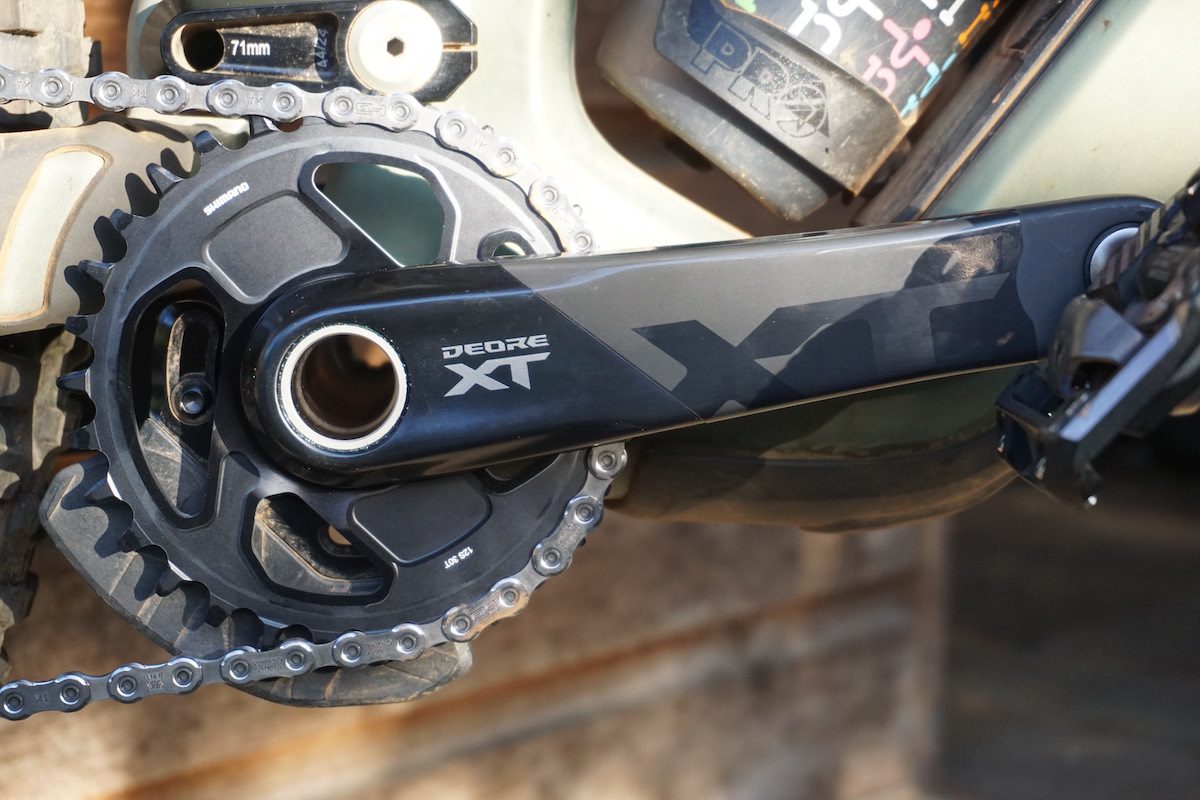 The black XT group is a little less flashy than XTR. Which isn’t a bad thing
The black XT group is a little less flashy than XTR. Which isn’t a bad thing
Riding XT Di2: Performance meets price
Other than a slight change in finish, with XT being darker than the gleaming new XTR group, Deore XT looks almost exactly like XTR. It works almost exactly the same, too. Shifting is sharp and fast, with no discernible decrease in shift speed or precision compared to the top-end group. Both are still way faster than all levels of the main competition.
We opted for the 9-45 cassette instead of the 10-51 XT, as mentioned above. We have a lot to say about that, but it also makes XT even faster, especially shifting into harder gears. It also makes for smaller steps between gears. More on that in our full breakdown of 9-45 vs 10-51.
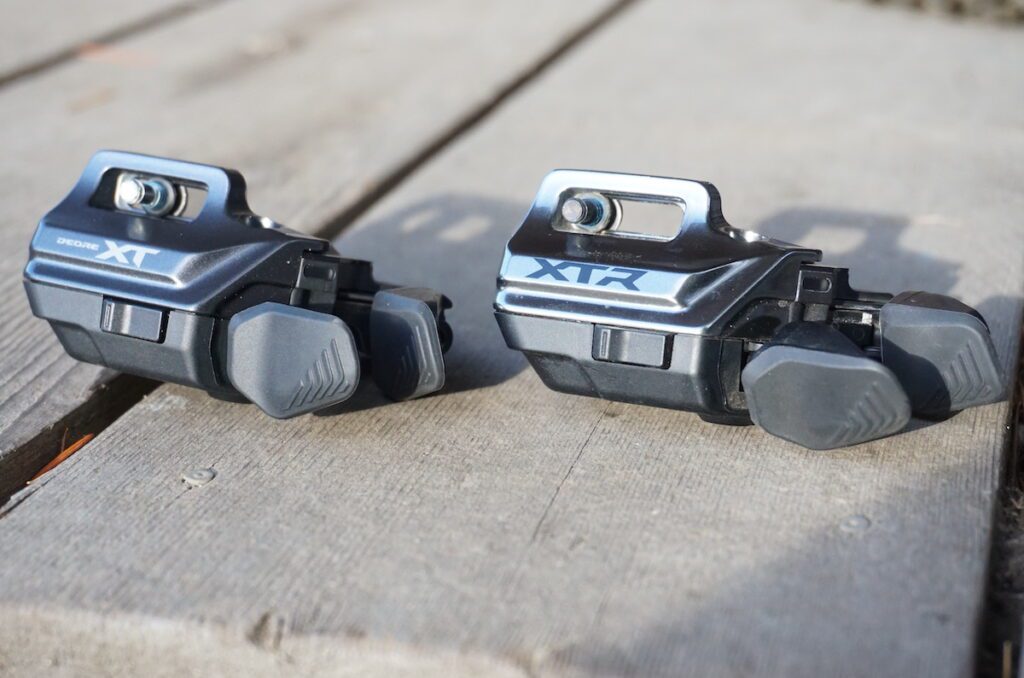 The XT and XTR shifter are nearly identical, other than tint. The shift paddles are still adjustable and replaceable
The XT and XTR shifter are nearly identical, other than tint. The shift paddles are still adjustable and replaceable 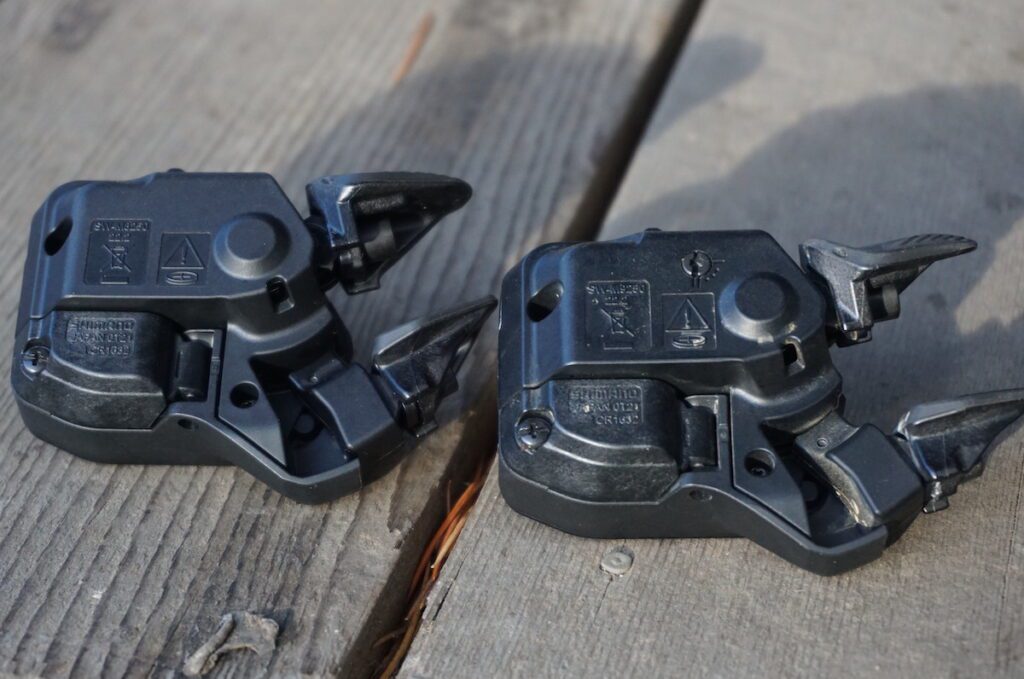 The only functional difference is the tiny “race day” switch on the underside of XTR (right) disappears from XT (left)
The only functional difference is the tiny “race day” switch on the underside of XTR (right) disappears from XT (left)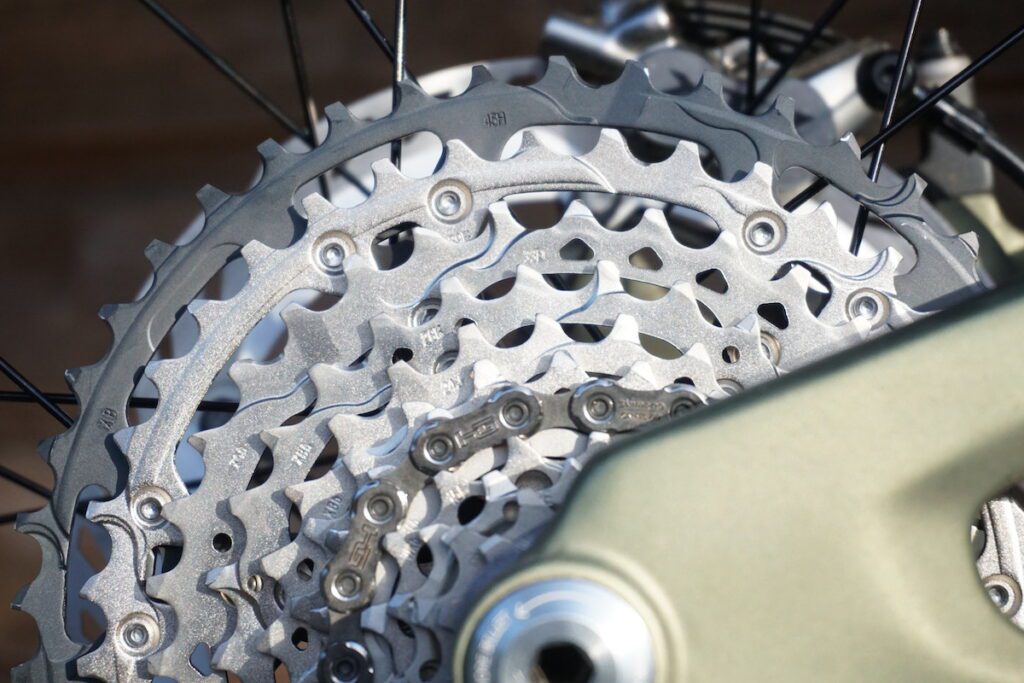 Construction changes on the cassette, with titanium cogs dropped in favour of more reasonably priced materials (aluminum and steel)
Construction changes on the cassette, with titanium cogs dropped in favour of more reasonably priced materials (aluminum and steel)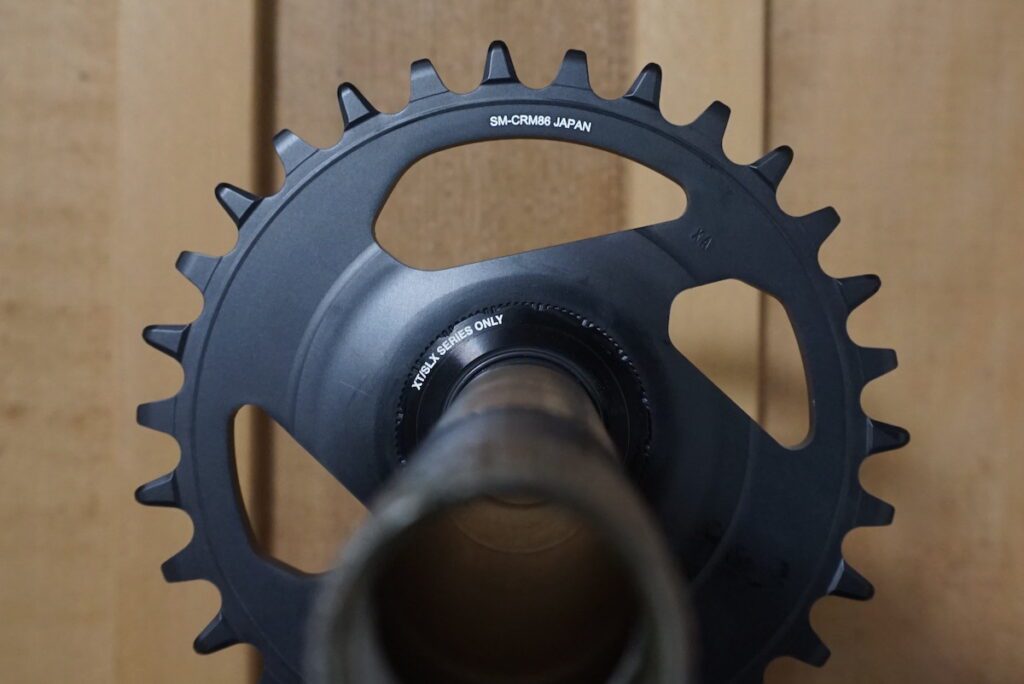 Chainrings are simpler, and slightly heavier than XTR
Chainrings are simpler, and slightly heavier than XTR
So, what are the differences? Due to different materials, XTR cassettes and derailleurs are slightly lighter than XT. That change in cassette material will also change durability, but it’s too early to say how yet. We don’t have enough miles on the XT group for any kind of comment in that regard.
XT also loses the “race day” switch on the shifter. That switch lets rides switch between single- and multi-shift without accessing the app. You can still limit XT to single shifts, you just have to open the app to do so. This might also make the XT shifter half a gram lighter, but both still show 97 grams on a scale.
Shimano’s new brake design is a big step up for the brand in terms of feel and power. The big test for XT will be durability and reliability over time, though, and it’s too early to say much on that front. But the initial feel is, like XTR, quite good.
XT wheels bring value to high-end group
While the fancy batteries and wireless bits steal headlines, the return of XT wheels are the sleeper deal in this XT launch. They have a great ride quality, being neither overly harsh or overly flexy. That kind of safe, middle ground that Shimano excels at that isn’t sexy or full of marketing hyperbole, but works really well every day. The kind of wheels that disappear under you and just go about doing their job, ride after ride.
So far, the trio of cartridge bearings and low-friction seals make for a very-smooth rolling wheel, on par with much more expensive wheels while still having fast 3.5-degree engagement. They’ve survived a couple bike parks days, some big climbs and a few crashes. Wet weather is coming soon and will be the next real test for these impressively-priced hoops. They’re a reasonable weight, especially for the price, if slightly on the heavy side. So far, my only complaint is that they only come with centerlock rotor mounts. Not a deal-breaker by any stretch. Others might not love that they’re Microspline-only, but I don’t see Shimano offering XD drivers any time soon.
Shimano XT Di2: Early impressions?
As usual, Shimano’s made XT a very attractive alternative to XTR. For anyone that cares about the price of their components, or who isn’t obsessed with cutting every gram possible, XT is the move. It’s not quite as light as XTR, but its shifting performance is indiscernible from the pricier group. Shimano’s built a reputation out of trickling performance down from its high-end groups, and this preserves that tradition. If it were my money, it’d be XT over XTR for sure.
The wheels are, likewise, winners. They’re also very smooth and I appreciate the easily-reparable design. I’m, personally, happy to see these return to Shimano’s line.

